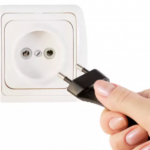It happens so that the finishers passed their work, the owner took the walls and ceiling. Everything seems to be in order. And after a while, when it is the turn of other works, significant defects on the surfaces suddenly appear. Where did they come from? The answer is obvious: they were there, but immediately remained invisible.

Visible defects to the customer are easier to identify. But the hidden ones are dangerous in that they can appear at the end of the repair or after its complete completion, when the alteration will cost much more. What are the consequences of hidden defects in plastering walls and ceilings - more on this below:
A large consumption of material - perhaps the wallpaper will not lag behind this, but the problem relates to hidden defects, since the rules for preparing the mixture are violated, which leads to the appearance of bumps on the surface and cost overruns material. A lot of water added to the cement mixture usually causes severe shrinkage and cracks;

The stucco applied in the fall falls off after winter or becomes moldy. The gypsum composition should not dry for more than 5 days, and cement - up to 3 weeks. If the hardening period occurred in humid conditions with a low temperature, gypsum may become moldy in the spring, and the cement will begin to peel off;

Red spots on the wall - this defect can appear through the wallpaper or paint. This means that iron beacons or other metal elements that were not protected from corrosion could have forgotten in the wall. They began to rust and caused stains;

The stucco layer lags behind the base. Builders poorly cleaned the wall or ceiling from dirt, dust, grease and other substances and did not prime as expected.
A layer of plaster cracks during drying. This happens if the plaster dries too quickly, direct sunlight can accelerate the process. The thick layer of cement was not reinforced with metal mesh.

Plaster falls away from a complex base such as cast concrete, ceiling slabs, iron corners, beams, supports. These substrates do not absorb water well and have poor adhesion, and the plaster was applied to them without anticorrosive coating and metal mesh.
Direct cracks in the walls and ceiling. They can appear at the junction of concrete slabs or of different bases: wood and iron, concrete and brick. On drywall, the reason is poor processing of joints and seams.
Mold on wallpaper, bubbles on paint, swelling of putty and plaster. The cause of these defects lies in the application of the top layer on a wet base.

Ceramic tiles fall off the walls after flooding from above or in a cold corridor mold appeared. The reason is that in wet and cold areas, water-soluble formulations not suitable for such work were used.
Strange spots on the floor and walls. It is possible that the surfaces were primed with an acrylic compound, which is able to corrode the finish putty layer like acid.
All these defects are easier to prevent than to fix later. Therefore, at all stages of the work, constant monitoring of the repair team is necessary. Do not be shy to point out to them the discovered flaws and force them to immediately eliminate.
-
 Updating the parquet floor yourself
Updating the parquet floor yourself
-
 Self-leveling mortar flooring
Self-leveling mortar flooring
-
 What to do so that the paint does not drip from the brush
What to do so that the paint does not drip from the brush
-
 Types of garden paths for giving
Types of garden paths for giving
-
 How to save on furniture
How to save on furniture
-
 Why the outlet does not let the plug in the appliance
Why the outlet does not let the plug in the appliance
-
 Errors that cause water to enter the cellar
Errors that cause water to enter the cellar
-
 What thickness of the wall is better not to do when building a country house
What thickness of the wall is better not to do when building a country house
-
 How not to regret pouring the bulk floor
How not to regret pouring the bulk floor
-
 Which pipe riser box will be the most beautiful and convenient
Which pipe riser box will be the most beautiful and convenient
-
 How to easily make art plaster
How to easily make art plaster
-
 Why you can not immediately walk on the laminate after laying
Why you can not immediately walk on the laminate after laying
New publications are published daily on our channel in Yandex. Zen
Go to Yandex. Zen


